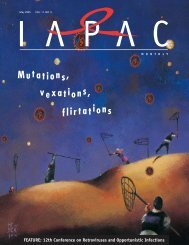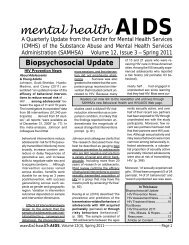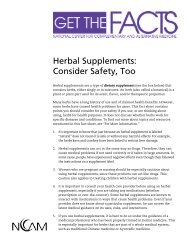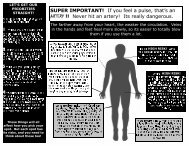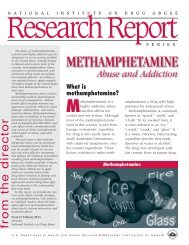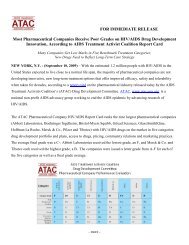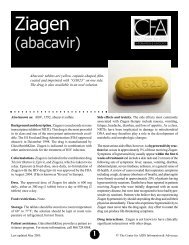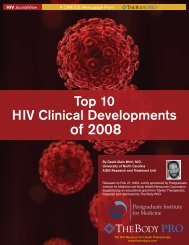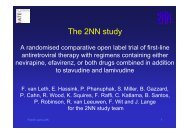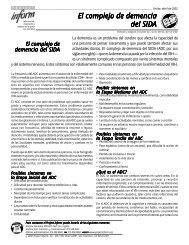Hepatitis C: New Treatments in the Pipeline - CD8 T cells - The Body
Hepatitis C: New Treatments in the Pipeline - CD8 T cells - The Body
Hepatitis C: New Treatments in the Pipeline - CD8 T cells - The Body
Create successful ePaper yourself
Turn your PDF publications into a flip-book with our unique Google optimized e-Paper software.
Figure 5 . Telaprevir Phase III Trial Design<br />
Week 8 Week 12 Week 24 Week 48<br />
Arm A TVR+PEG+RBV PEG+RBV<br />
Arm B TVR+PEG+RBV PEG+RBV<br />
Arm C PEG+RBV<br />
• TMC 435350<br />
Tibotec and Medivir are co-develop<strong>in</strong>g TMC 435350, which has entered phase II. In Europe,<br />
TMC 435350 is be<strong>in</strong>g studied <strong>in</strong> both treatment-naïve and treatment-experienced people<br />
with hepatitis C genotype 1. This trial is evaluat<strong>in</strong>g a seven-day lead-<strong>in</strong> with different doses<br />
of TMC 435350 or placebo, with or without pegylated <strong>in</strong>terferon and ribavir<strong>in</strong>. <strong>The</strong> lead<strong>in</strong><br />
is followed by 21 days of triple-<strong>the</strong>rapy with TMC 455350 plus pegylated <strong>in</strong>terferon and<br />
ribavir<strong>in</strong>. Participants will subsequently receive 24 or 48 weeks of standard-of-care treatment,<br />
accord<strong>in</strong>g to early treatment response (see Terms for Response to Treatment, page 34).<br />
• VX-500<br />
Vertex is develop<strong>in</strong>g a second-generation HCV protease <strong>in</strong>hibitor, VX-500, currently be<strong>in</strong>g<br />
studied <strong>in</strong> healthy volunteers. A phase Ib trial <strong>in</strong> people with HCV is slated to beg<strong>in</strong> <strong>in</strong><br />
mid-2008.<br />
HCV Polymerase Inhibitors<br />
<strong>The</strong>re are two dist<strong>in</strong>ct classes of hepatitis C polymerase <strong>in</strong>hibitors—nucleosides and nonnucleosides.<br />
Each <strong>in</strong>hibits HCV replication by a different mechanism; nucleosides are cha<strong>in</strong><br />
term<strong>in</strong>ators, while non-nucleosides cause conformational change. Polymerase <strong>in</strong>hibitors may<br />
have activity across HCV genotypes; <strong>the</strong>y hold great promise, but <strong>the</strong>ir Achilles heel is toxicity,<br />
which has led to <strong>the</strong> discont<strong>in</strong>uation of more than one candidate.<br />
HCV Polymerase Inhibitors (oral)<br />
Product Manufacturer Status<br />
GS 9190 Gilead Phase I<br />
GSK625433 GlaxoSmithKl<strong>in</strong>e Phase I<br />
PF-00868554 Pfizer Phase I<br />
R1626 Roche Phase IIb<br />
R7128 Pharmasset/Roche Phase I<br />
VCH-759 Virochem Phase II completed<br />
21



